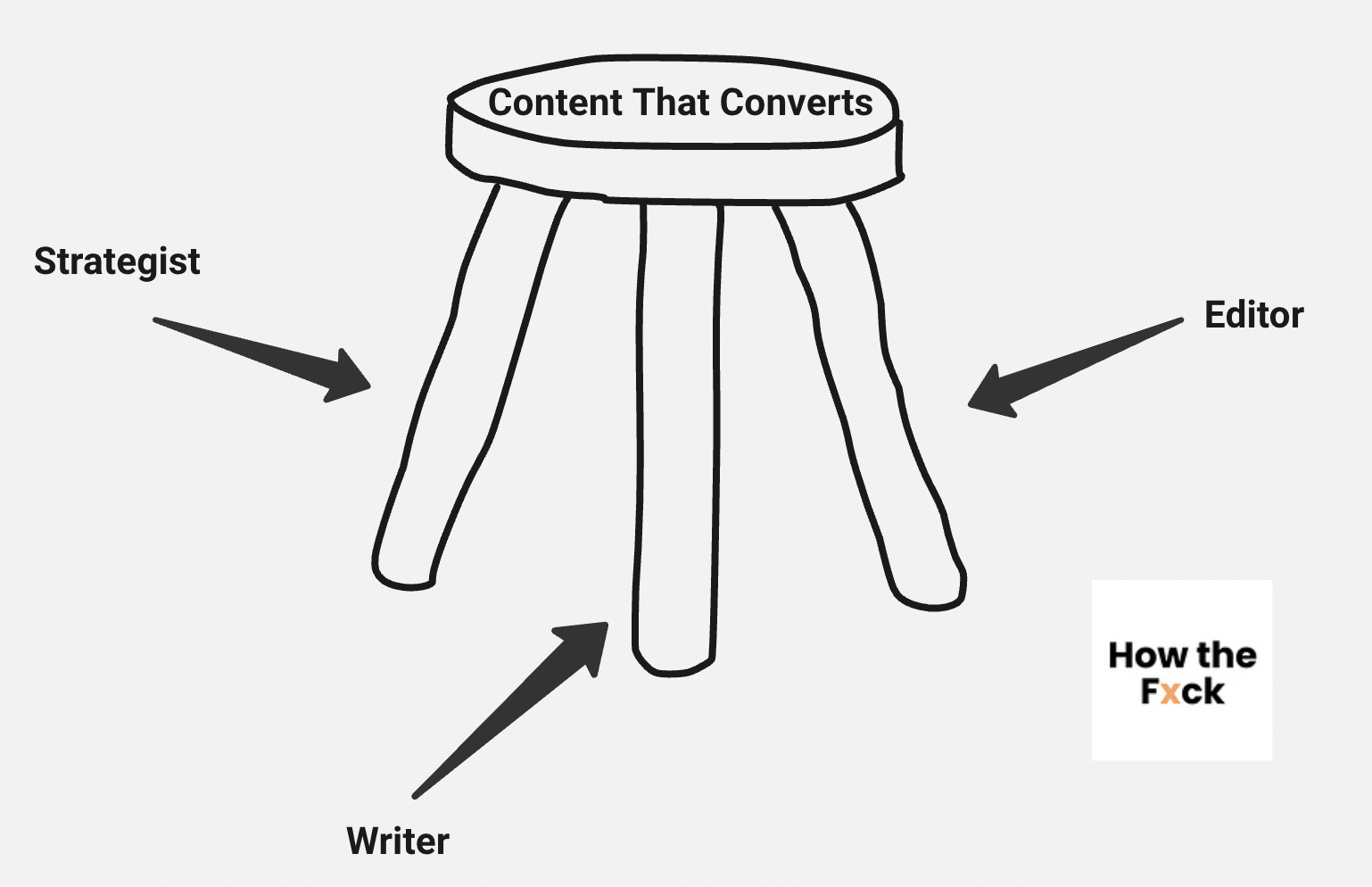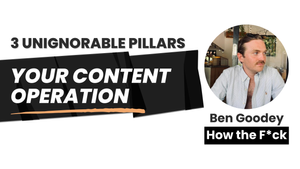Ever heard the phrase "take away one leg of a stool, and the whole thing collapses"?
It's a metaphor I use often when talking about content operations.
Like a stool, a lean, mean, quality content machine has three core pillars that keep it sturdy.
Each pillar works together to support the desired outcome:
- Content that resonates
- Content that converts
Also like a stool, the best outcomes are achieved when each pillar pushes against the others—when they fight under the shifting responsibility of content quality—to ensure standards stay high.
The Three Unignorable Pillars of Your Content Operation (And Their Role)

1/ Your strategist
Your strategist plays an "older sibling" role in your operation.
It's an ownership role—responsible for the piece from start to finish.
Their key deliverable is a content brief, which helps the writer know:
- The audience the writer must speak to
- The angle to take that's on-brand & will resonate with the reader
- The heading structure to follow
- The "next steps" to drive the reader toward
- The sources of unique insight & data to use
This is a difficult role to fulfill. To do this role well, you need to be an expert in:
- Product & audience
- Business strategy
- Content strategy
- SEO strategy
But if it's done well, it makes the entire process of creating a piece of content efficient (and $$ outcomes a reality)
Once the brief is done, they throw the proverbial (American) football to:
2/ Your writer
Your writer takes the brief.
With it, they should begin weaving in their magic:
- In-depth topic research
- Discovery of unique sources of insight
- Reaching out to experts to support points with a quote
You'll notice that both the writer and strategist can and should do these things.
To design a quality brief the strategists needs to have researched the topic themselves (and can help the writer out by telling them which really good bits of research you came across).
But, the writer's job isn't done.
Ideally, they go deeper.
Ideally, they look for better, more unique insight that helps them form a confident opinion to attack the piece with.
Then it's their role to:
- Craft writing with substance
- Craft writing that hooks attention
They follow the brief but with their creative magic applied on top.
(Like the strategist, it is very hard to find writers that fulfill all these roles. That's why I recommend testing new writers regularly and filling your writer funnel.)
Once the first draft is done, they throw the ball to:
3/ Your editor
The editor's role is mission-critical—like all legs on this stool.
Their role is to verify:
- The brief was followed
- The writing is concise and fluff-free
- There's energy & flow to the writing
But it's much more than that.
A top-tier editor also makes sure:
- The brief made sense in the first place
- The final outcome is audience-centric
- There's a thread that attaches the first sentence to the last
- The products & services were sold, not explained
When they're done?
The writer likely has revisions.
The strategist will want another look (and will learn something new for next time).
And someone needs to publish the blog and submit it to Google 💁
Content You (Might Have) Missed:
- Premium: How to Write Top Tier "Best X Software" Listicles (With Template)
- Free: Top 10 SEO Tasks You Must Not Ignore
- Free: My Ultimate Design for SEO Checklist (Notion File)
- Premium: Scaling ClickUp to 100K/mo with as a 1-man content team (Josh Spilker's story)
The full backlog can be found here.


